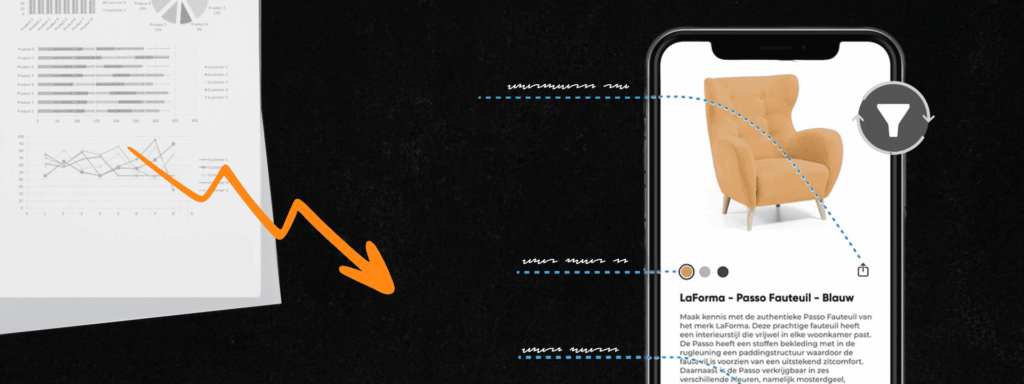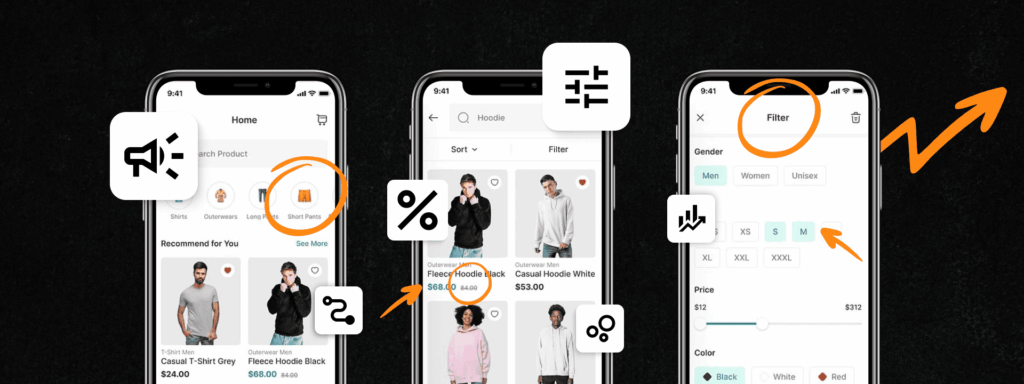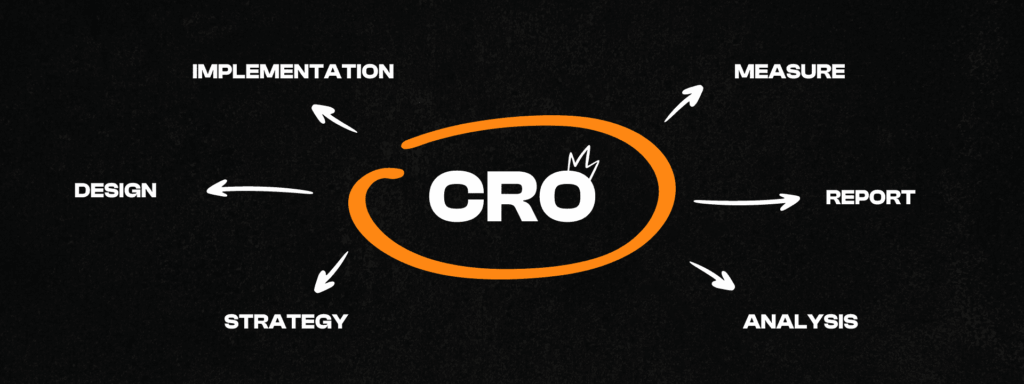In today’s e-commerce landscape, mobile devices have become the primary way people browse and make purchases. However, many online stores still struggle to convert mobile visitors into customers. A low Mobile Conversion Rate can severely impact your revenue, especially as more shoppers expect a seamless, fast, and intuitive experience on their phones. Understanding why your mobile store underperforms is the first step to turning lost opportunities into real sales.
Let’s look at the numbers. Mobile devices now account for 77% of eCommerce site visits and 66% of purchases. Global mobile commerce sales reached $2.2 trillion in 2023 and are projected to surpass $3.4 trillion by 2027. This shift is particularly notable among younger generations: 92% of Americans aged 30–49 regularly shop on smartphones, surpassing even Gen Z (source: simicart.com).
But here’s the catch: despite all this mobile traffic, conversion rates on mobile remain far lower than on desktop. The average Mobile Conversion Rate is just 2.85%, while the desktop reaches 3.85%. That means many online stores are leaving money on the table by not fully optimizing for mobile.
In this article, we’ll break down why your Mobile Conversion Rate might be underperforming — and what you can do to fix it.
Why Mobile Conversions Are Critical in eCommerce
Most of your users are coming to your website from mobile devices. Mobile traffic is no longer just an “additional channel.” In most e-commerce projects, it accounts for 60–80% of all visitors.
But here’s the key: mobile users are not the same as desktop shoppers. Their behavior, expectations, and tolerance levels are entirely different.

For example:
- They’re browsing your shop while commuting, on the go, or between tasks.
- They have limited time, spotty internet, and are often using their phone with one hand.
- They won’t try to figure out where to click, read lengthy descriptions, or go through a five-step checkout.
So here’s the real question: Is your store optimized for a real mobile user — someone who opened your site with one hand and has 30 seconds to make a decision? If not, your mobile traffic may slip away—not due to a lack of interest, but because your UX fails to align with real mobile shopping behavior.
The consequences of poor mobile adaptation:
- High bounce rates. Users close the site before it finishes loading or after seeing a cluttered, frustrating layout.
- Cart abandonment occurs when shoppers add items but drop them off during checkout because the list is too long, too complex, or unclear.
- Direct revenue loss. Every abandoned session isn’t just “a missed chance” — it’s real money lost that your business could have earned.
If this sounds familiar, contact IT Delight, and we’ll help you identify the weak spots in your mobile UX and show you exactly how to turn that traffic into sales.
Main Mobile Conversion Killers We See Most Often
Low mobile eCommerce conversion usually isn’t about bad marketing or uninteresting products. Most of the time, it’s about fundamental technical issues and mobile UI/UX problems that make it tough for people to buy quickly and easily.
The biggest problem is slow site loading. If your page takes over 3 seconds to load, over half of mobile visitors leave and don’t return. Slow sites don’t just increase your bounce rate on mobile; they also significantly reduce the likelihood of a purchase. eCommerce mobile speed is crucial—optimize images, use caching, reduce scripts, and have a good CDN. If you’re on Magento or Shopware, a Magento mobile optimization or Shopware mobile UX audit can pinpoint what’s slowing you down.
Another significant issue is complicated navigation. In mobile-first e-commerce, navigation must be simple and easy to understand. People browsing on their phones are usually in a hurry. Too many menu items, hard-to-use filters, or a hidden search bar make it hard to convert visitors. Clear categories, simple menus, and an easy-to-use search function keep people on your site and make purchasing easier.

The checkout process is also a common pitfall. People often abandon their cart if their mobile checkout has too many fields, no autofill, or is missing quick payment options like Apple Pay or Google Pay. Checkout is the last step before a purchase, so it’s vital to make it as smooth as possible. Fewer fields, autofill, and one-click payments can make a huge difference in your mobile conversion optimization and help you boost mobile purchases.
Finally, a lack of trust signals can scare away mobile shoppers. On phones, people make decisions quickly; if your site doesn’t display reviews, clear shipping information, or secure payment icons, users become doubtful and might leave. Adding product reviews, payment logos, and clear return policies are simple but effective ways to build trust and improve your overall eCommerce UX. Small factors collectively shape the mobile shopping experience and influence whether visitors become paying customers.
10 Ways to Increase Mobile eCommerce Conversion Rate in 2025
We provide trusted solutions to improve your mobile eCommerce conversion. These proven strategies genuinely increase sales and enhance the mobile shopping experience for customers.

#1 One-Click Payment Integratio
Allow customers to complete purchases with a single click using saved cards or mobile wallets. This approach is a crucial part of checkout CRO and helps reduce cart abandonment by streamlining the final step of the conversion funnel.
#2 Dynamic Personalized Mobile UX
Leverage AI and user behavior analysis in eCommerce to display relevant products, promotions, and recommendations tailored to each user’s preferences and device. This form of CRO strategy for mobile UX significantly improves engagement and conversions.
#3 Implement Progressive Web Apps (PWA)
PWAs deliver a fast, app-like experience directly in the browser, without installation, significantly improving the mobile shopping experience and reducing mobile CRO metrics, such as bounce rate and abandonment.
#4 Optimize for Voice Search
As voice becomes an increasingly popular input method, optimizing content for voice queries enhances your eCommerce performance audit and drives more qualified mobile traffic, boosting eCommerce revenue optimization.
#5 Test and Enhance Touch Interactions
Improve conversion-optimized design by making buttons, swipes, and gestures comfortable and responsive. This UX optimization for CRO helps overcome common mobile conversion blockers, increasing user satisfaction.

#6 Use Real-Time Social Proof
Display notifications on mobile about how many users are viewing or have recently purchased a product. This tactic creates urgency and supports conversion funnel optimization by nudging users closer to purchase.
#7 Micro-analytics of Mobile User Behavior
Conduct a thorough mobile CRO audit and implement eCommerce A/B testing to track every step of the user journey. This data-driven approach helps identify drop-off points and target improvements precisely, enabling effective, optimized mobile user journey strategies.
#8 Adaptive Push Notifications Based on User Behavior
Send personalized, timely messages triggered by user actions, such as cart abandonment or returning after a period of inactivity. This technique is a powerful lever in CRO for online stores to increase conversions and loyalty.
#9 “Tiny Fingers” Optimization
Design your mobile UI with thumb-friendly zones and minimize accidental taps. This detail in conversion-optimized design is crucial for reducing frustration and enhancing mobile CRO metrics.
#10 Prioritize Critical Content Over Visual Effects.
Eliminate heavy animations and complex graphics that slow down your site. Focus on speed and clear, compelling CTAs optimized for mobile conversion to maximize ROI and overall eCommerce revenue optimization.
You can elaborate on each point or customize these recommendations for your specific platforms.
Boost Mobile Sales in Your Online Store!
We’re ready to dive into more specific results and craft a data-driven CRO strategy tailored to your business needs when you are.
How IT Delight Helped Improve Mobile Conversion for a Fashion Accessories Retailer
Want to see these strategies in action? Here’s a brief look at a typical success case from our projects. After conducting a comprehensive mobile CRO audit and implementing targeted UX optimization for CRO, we helped an online store reduce cart abandonment and expedite their mobile checkout process.
Focusing on conversion funnel optimization and improving the mobile shopping experience boosted our client’s mobile eCommerce conversion rate and revenue.
Specifically, our team’s efforts resulted in:
✅ 28% increase in mobile conversion rate
✅ 22% decrease in cart abandonment
✅ 35% faster checkout time
✅ An overall 31% growth in mobile sales
Questions & Common Concerns About Mobile Conversion Optimization

“My site is already responsive. Why are my mobile sales still low?”
This is the most painful question. Responsive design is a technical baseline, not a sales guarantee. Mobile CRO digs beyond appearance, focusing on how users interact with the product. Your mobile conversion blockers stem from usability issues, including complex navigation, clunky checkout, tiny buttons, slow load times, or a lack of trust. Mobile CRO specifically identifies these “pain points” preventing purchases.
“Will this even pay off? It’ll be too expensive, and I won’t see results.”
This is a natural concern, especially with tight budgets. However, ignoring mobile conversion directly results in lost revenue. Every non-converting visitor due to poor UX is a lost profit. Data-driven CRO targets investments that yield the most significant impact, such as checkout CRO or UX optimization for CRO. The goal of CRO for online stores is clear: increase ROI through CRO by minimizing cart abandonment and maximizing your bottom line.
“How do I even know what to improve, and how do I test it?”
This is a significant challenge for many. We start with a mobile CRO audit and user behavior analysis eCommerce, deeply diving into data to pinpoint where users drop off in your conversion funnel. Then, we use eCommerce A/B testing to scientifically validate hypotheses (e.g., optimizing CTAs for mobile conversion or tweaking design elements) before implementing them on a large scale. This ensures decisions are based on mobile CRO metrics, not guesswork.
In a Nutshell: Unlocking Your Mobile Sales Potential
Today, most online traffic is mobile, yet too many eCommerce stores are still missing out on high mobile conversion. Optimizing your UX, site speed, navigation, checkout process, and trust elements is key to boosting your bottom line. We can help you pinpoint what’s going wrong. If these concerns resonate with you, reach out to us. We’ll identify your specific bottlenecks and explain how we can solve them through a comprehensive CRO Website Audit.
